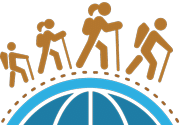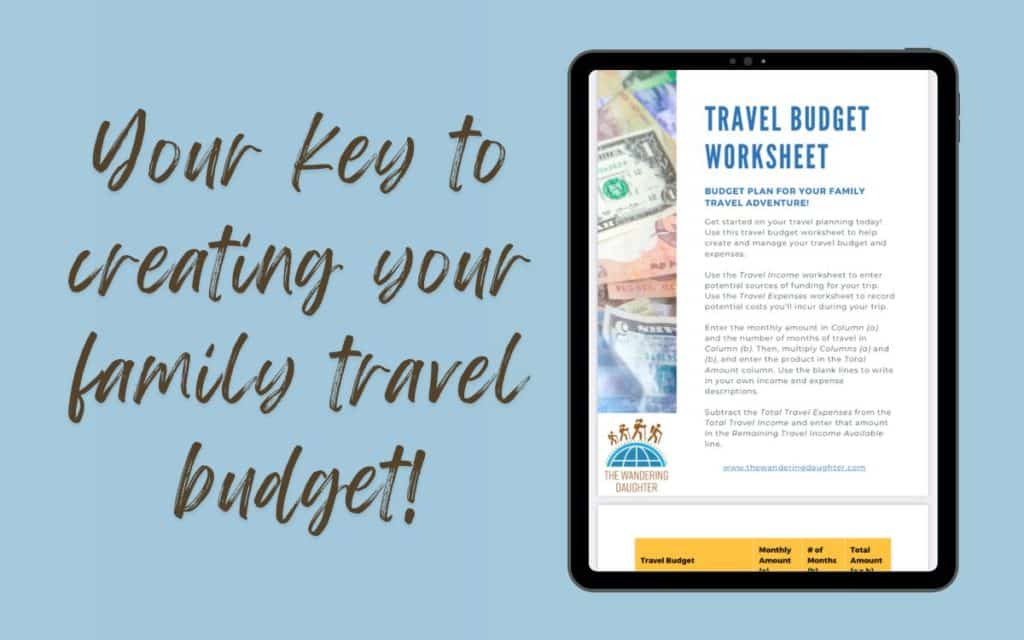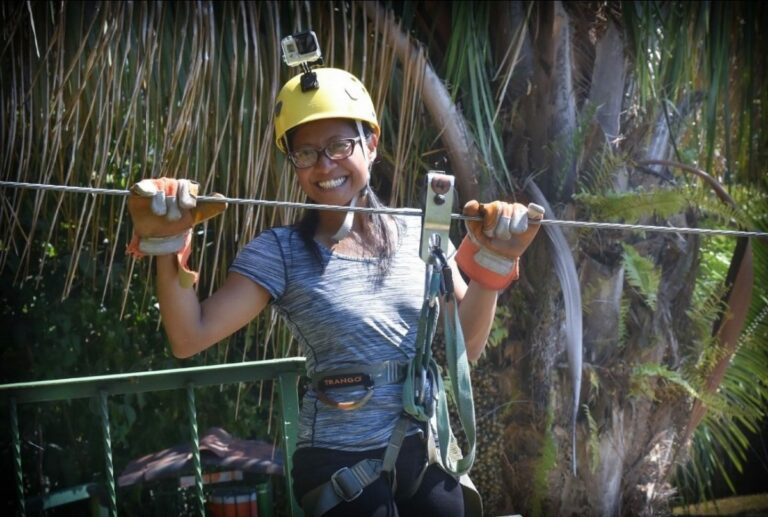What is Worldschooling? 15 Essential Facts For Families
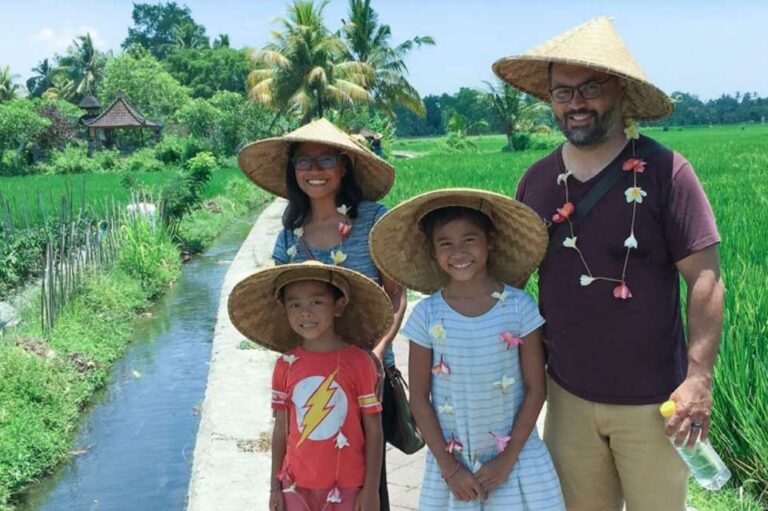
Worldschooling has gained in popularity over the years. But many people still ask, “what is worldschooling?”
Is it an educational philosophy? Or is it a type of travel? And is it something that only families can do?
The questions surrounding what is worldschooling are plentiful. And as many more families begin to do this type of lifestyle, the answers to these questions become increasingly more complex.
Since we’ve been traveling full-time for quite some time now, I thought I’d share my own thoughts and understanding of what is worldschooling.
This post may contain affiliate links. That means I may receive a small commission if you click on the link and purchase something. But don't worry, this will not result in any extra costs to you.
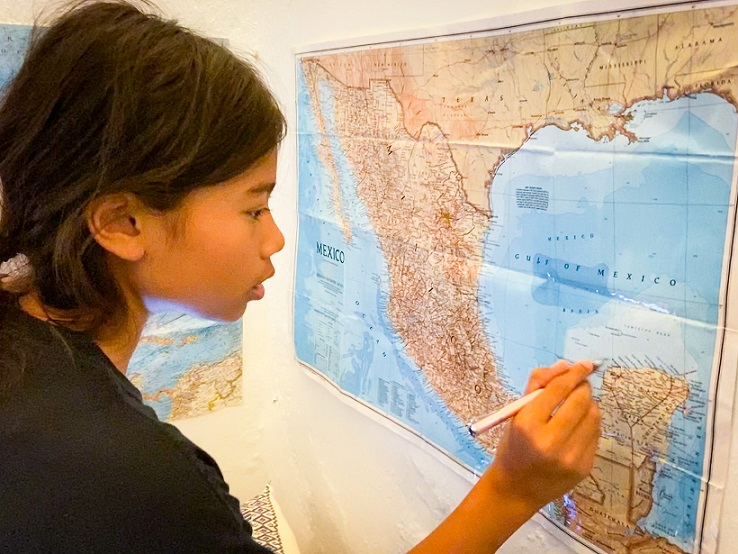
What is worldschooling?
The term worldschooling essentially means using the world as your classroom. It means finding meaning and knowledge from the things you encounter in the world.
This definition lends itself to a variety of interpretations. And I think that’s one of the great things about worldschooling. There is so much flexibility in how families can worldschool. Take a look at the book, The Road Taken, edited by Michelle Damiani, to read a variety of stories of how families worldschool with their kids.
When and where did worldschooling originate?
There’s no official date to when the term “worldschooling” was first used. Some sources point to Eli Gerzon as the first person to officially use the term in 2008.
However, prior to 2008, many families were already doing this type of lifestyle before anyone even knew what is worldschooling. At its core, worldschooling is about gleaning lessons from your experiences in the world. So in that sense, the worldschool learning approach has existed for as long as there have been families who travel.
One of the early pioneers of worldschooling as we know it today are Jenn and Tony Miller. They chronicled their travels on their site, The Edventure Project. Now that their children are grown, they continue to pass on their knowledge to other families.
Fact #1: worldschooling existed even before the term was invented
Take some time to explore more topics on traveling and learning.
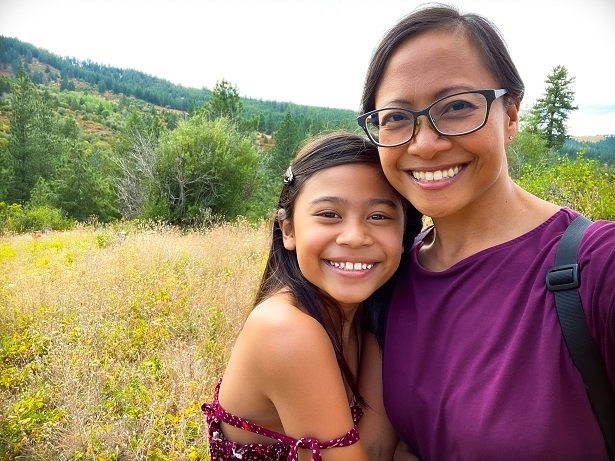
What is worldschooling compared to homeschooling or unschooling?
Many families think worldschooling is a separate form of learning than homeschooling. Or they think that it is a form of unschooling, which is a more child-directed form of learning.
In actuality, when you worldschool, you are doing both and neither of these things!
Using world experiences can be a beneficial component to your kids’ learning. The educational aspects of worldschooling lend itself well to all aspects of learning. However, it’s not an educational method in and of itself.
Rather, worldschooling is an approach to learning, and not necessarily a learning philosophy. That means all types of homeschooling philosophies can incorporate worldschool experiences, from Charlotte Mason to unschooling. Even children in traditional schools can make use of this learning approach.
Fact #2: worldschooling can be a supplement to your existing form of schooling
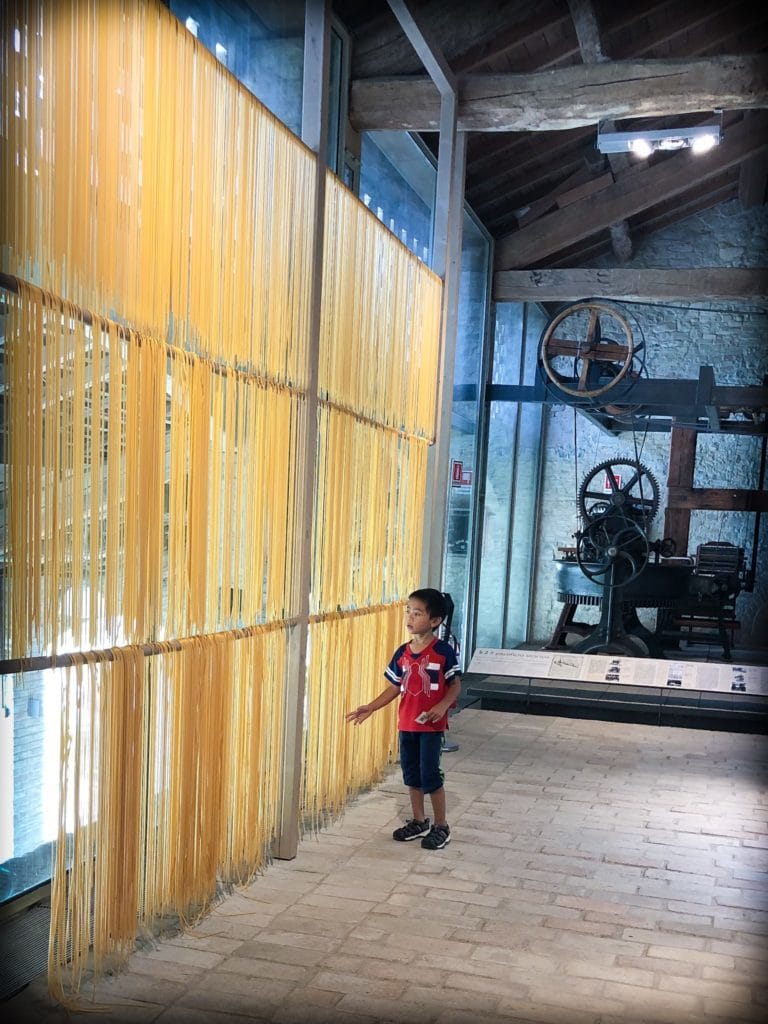
Do you need money to worldschool?
It’s a common misconception that you need a lot of money to be able to worldschool. Many families assume that travel is required for this type of experiential learning.
However, it’s actually possible to worldschool even when you’re not traveling. Worldschooling involves using experiences in the world to learn. And those experiences need not be thousands of miles from home!
As such, this learning approach doesn’t require a lot of money. Instead, it requires an open mind to learning opportunities wherever you are. Even if you are utilizing worldschooling resources for your travels or your learning, they need not be overly expensive.
When you're not traveling, you can use books like The Travel Book by Lonely Planet to learn about countries around the world.
And when you are traveling, you don’t need to splurge on extravagant experiences. Simple travel experiences like walking through a night market or taking public transportation are all part of what is worldschooling.
Fact #3: you don’t need a lot of money to worldschool
Read here to learn how you can do affordable world travel with your family.
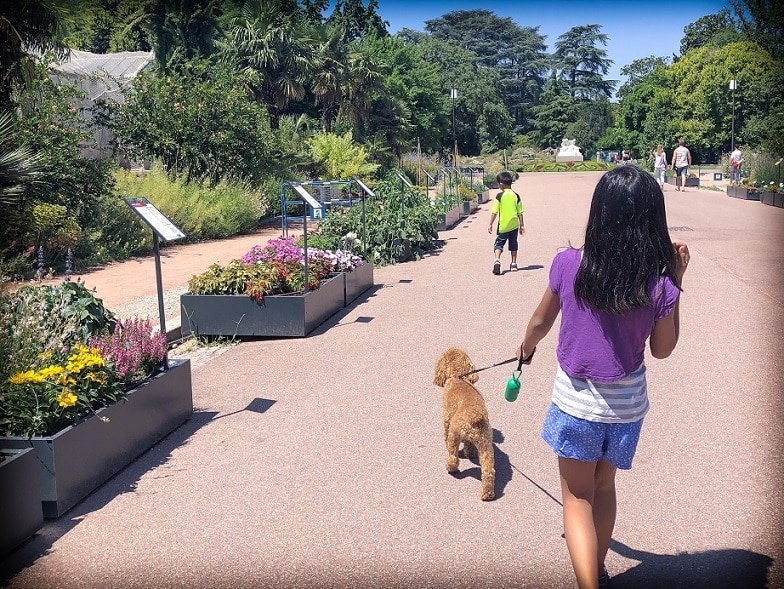
Benefits of worldschooling
The benefits of this experiential learning approach abound for your kids and family. Whether that means connecting deeper to a destination, to yourself, or to others. Worldschooling helps kids understand their place better in this world.
Deeper travel experience in the world
When you travel to a destination with purely a vacation mindset, your main focus is being entertained. But when you approach a destination with a learning mindset, you start to understand what is worldschooling.
By taking a learning approach to travel, the experiences you have change. Visiting museums, taking cultural tours and workshops, or learning about the history of a destination gives you a deeper understanding of the places you visit. It offers more context to your travel experiences.
Fact #4: worldschooling helps you experience a destination on a deeper level
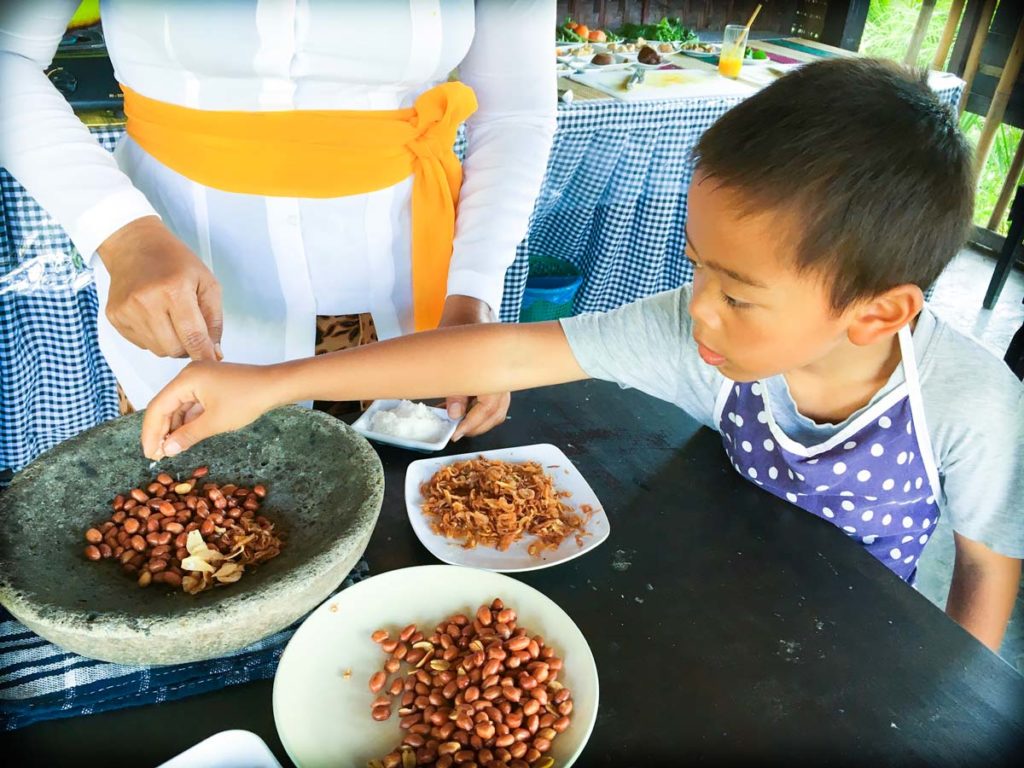
Connection with your own family
Besides connecting with a destination, one of the other benefits when thinking about what is worldschooling is the connection to your own family. Traveling and learning as a family can help foster a deeper bond between you and your kids.
The experiences you have with your kids when you travel help create lasting family memories. They make for some memorable family bonding activities.
Fact #5: worldschooling can help you bond as a family
Take a deeper look at what worldschooling life is like for a family.
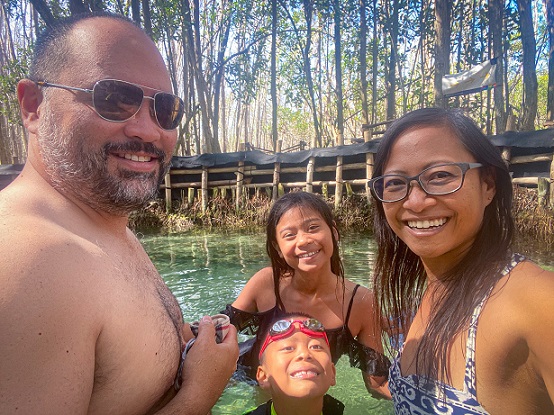
Connections with other families
For many families, community plays an important role in their lives. And that’s no different for a worldschooling family. One of the unexpected benefits of this lifestyle is connecting with other families who travel and learn too.
A big part of what is worldschooling is the worldschooling community. It’s an active and thriving global community made of families from a variety of backgrounds. They encompass a diverse array of philosophies and beliefs as well.
You can find other families online through Facebook groups like Worldschoolers, We Are Worldschoolers, and Worldschooling Central. You can also search directories of worldschooling communities to find permanent and temporary worldschooling communities like WorldSchool Hub of Andalucia and Anahata Worldschooling Community.
There are also a number of traveling families who share their experiences online. Give these travel with kids blogs a follow and send them a message to connect!
Fact #6: the worldschooling community is active and thriving, both online and offline
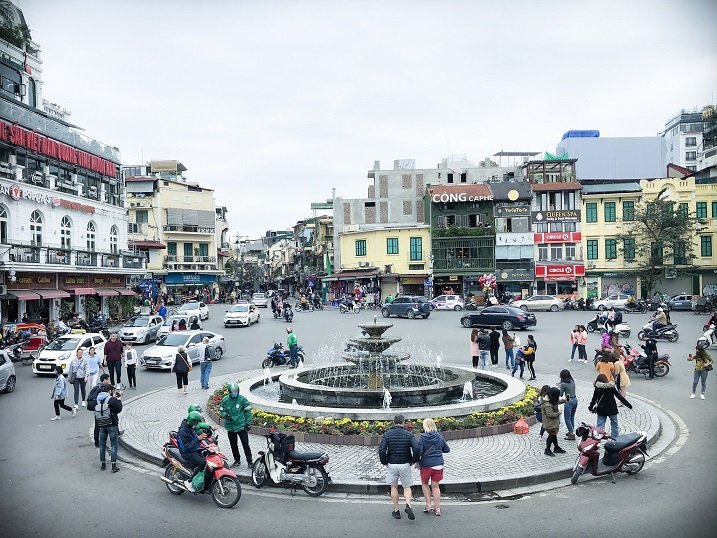
Enrichment for your children
Many theories around learning and knowledge retention posit that you retain information more by doing rather than by reading about it. In fact, the learning pyramid model shows that students retain 70% of what they learn by doing, compared to retaining 10% of information from reading.
When we apply this school of thought to what is worldschooling, we can see how enriching it can be for children. Engaging in activities related to the world, rather than just reading about them in books, leaves a stronger impression on children’s memories.
Fact #7: worldschooling enriches knowledge through hands-on learning experiences
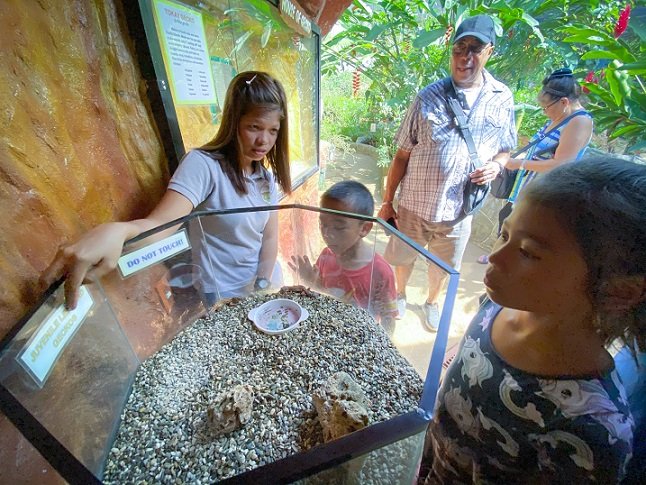
Addressing bias and multicultural awareness
It may sound cliché, but one of the biggest educational benefits of travel is gaining multicultural awareness. Whether we are aware of it or not, we as humans operate within biased mindframes.
These biases are informed by our past experiences. And they’re also informed by the communities that surround us.
Travel experiences expose kids to different cultures and ways of living. It encourages families to address biases they may have. And it helps kids create their own views of the world based on lived experiences rather than stereotypes.
If you’re curious about what is worldschooling from an anti-bias education perspective, take a look at the resources available from the National Association for the Education of Young Children. Farzana Nayani's book, Raising Multiracial Kids, is also a good resource to use for anti-bias education.
Fact #8: worldschooling builds multicultural awareness and helps combat bias
Read here to learn about more ways you can travel more responsibly with your kids.
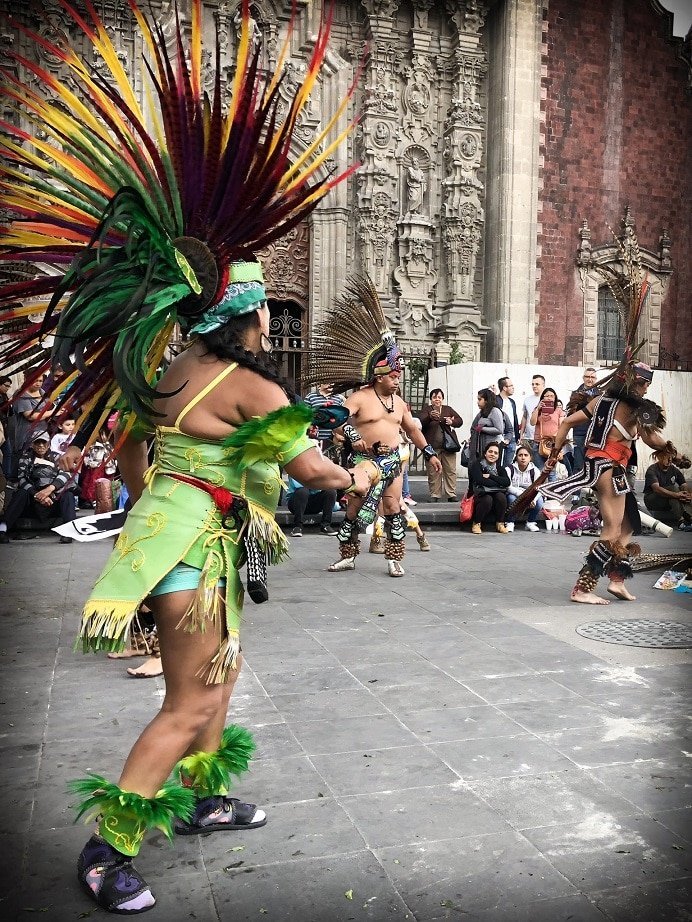
How do families worldschool?
Since the definition of worldschooling can be interpreted in so many ways, the implementation of this learning approach is equally varied. Some families worldschool from home, while others only do it when they travel. And still, other families utilize online resources to worldschool wherever they are.
Here are some of the many ways families can worldschool their kids.
Worldschooling from home
It’s a common misconception that you need to be traveling in order to worldschool. While travel certainly comes to mind when people ask, “what is worldschooling”, it’s not necessarily a critical component to worldschooling.
In actuality, you can worldschool at home, even when you’re not traveling. Worldschooling focuses on using experiences in the world as a basis for learning. But those experiences don’t have to be far from home.
If you aren’t in a position to travel right now, look for learning opportunities in your city, like nature hikes, museums, or cultural events. You can also take advantage of worldschool-based online resources.
Find travel card games that encourage learning about the world, like the Carmen San Diego card game. You can also check out the card game that my family and I created, called Stack The Scoops. Or do the activities in this fun Outdoor Family Adventure Guide. There are plenty of worldschool-based activities you can do at home or close to home.
Monthly subscription boxes from Little Passports are also a great way to learn about the world without leaving home.
Fact #9: you don’t need to travel to worldschool

Learning while traveling
The more common idea of what is worldschooling, however, does involve travel. A lot of the travel experiences that families who worldschool have done inherently have a learning component to them.
Visiting a new place offers families a chance to learn about the natural environment, the culture, the language, and the history. When they worldschool, they can take advantage of those learning opportunities.
Families can build on those lessons throughout the trip. Kids can use The Ultimate Travel Journal For Kids to help them reflect on their travel experiences. And after a trip, families can continue the worldschool lessons through discussions, books, and engaging in cultural activities at home.
Fact #10: learning opportunities occur for families both during and after their travel experiences
Take a look at this 10 day Bali itinerary for ideas on how to incorporate worldschooling into your travels.
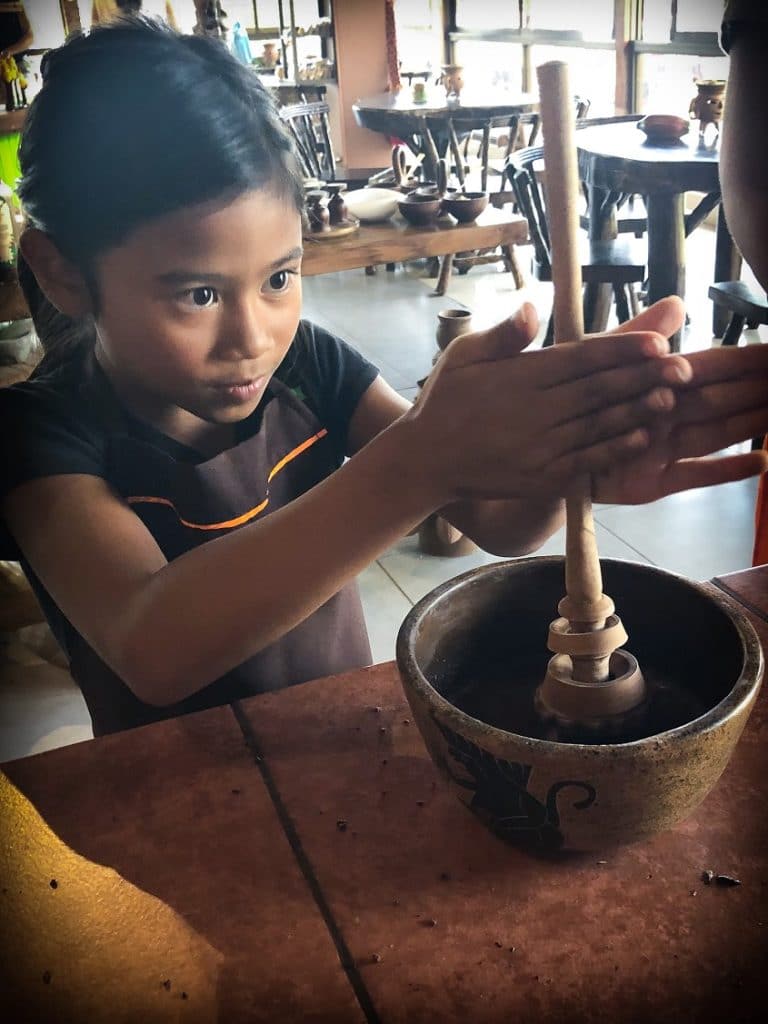
Online learning
Another part of what is worldschooling, especially today’s version of worldschooling, is the use of technology. For some families, a worldschool experience isn’t always a physical one. Worldschooling can also occur online.
With the availability of online communities and online classes, families have access to virtuality any subject and any type of learning. This opens doors for families to learn about the world.
Online learning communities like Galileo XP is one option for families. Kids can also take advantage of online classes from sites like Outschool or online learning programs like Homer for younger kids.
Fact #11: plenty of worldschool opportunities exist online for families
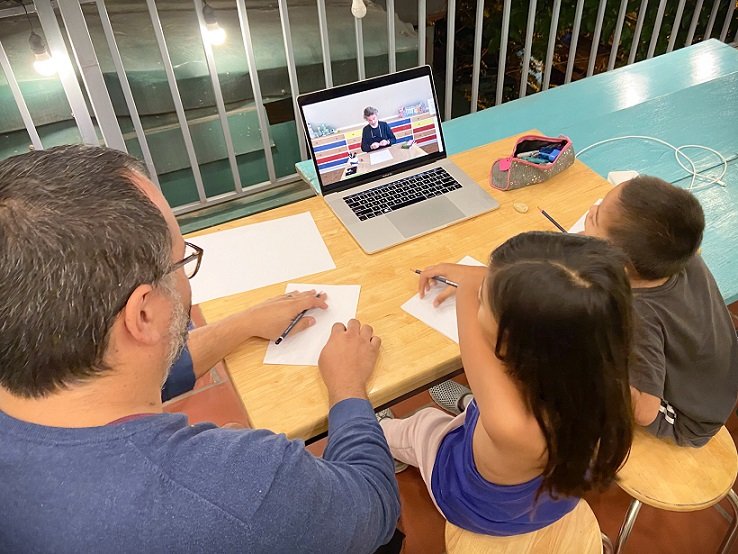
Traveling with another family
Another way for families to worldschool is to travel and learn with another family. This is a great option for families to explore what is worldschooling in a community-based way. Families can often learn different ways to worldschool from other families.
Traveling with another family also offers opportunities for family connections. Being with another family reinforces the importance of communication, cooperation, and collaboration. Children can also learn from their peers, and develop strong bonds with other kids who worldschool.
Fact #12: families often learn how to worldschool from other families
Find more learning resources for worldschooling families here.
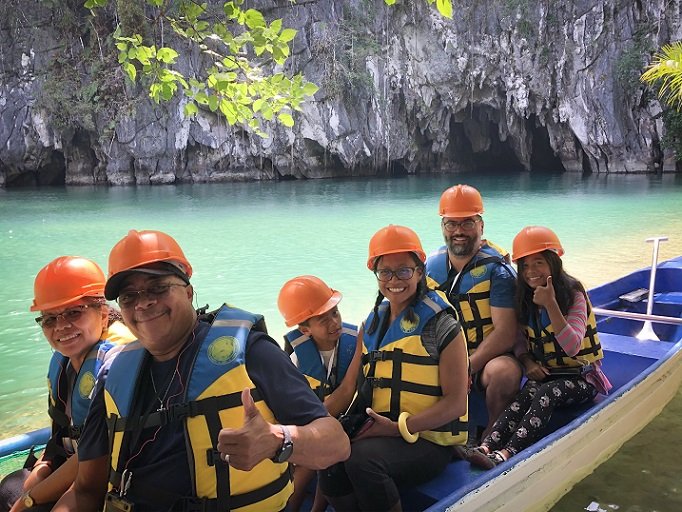
When should you start worldschooling?
There is no perfect age to start worldschooling. Families can begin to worldschool their kids when they're as young as babies. And they can continue worldschooling well into their teens.
But the approach to worldschooling will certainly differ depending on the age of your child. Take a look at these age-appropriate ways to worldschool.
What is worldschooling like for babies, toddlers, and preschoolers?
For young children, their worldschool experiences are mainly unstructured. At this age in development, kids learn the most through play. So the experiences should focus on play, rather than formal lessons.
Go on nature walks during your travels. Visit parks. You can explore a museum, but don’t spend too much time at the exhibits. When possible, focus on tactile and hands-on learning that doesn’t require too much hand-eye coordination or dexterity.
Fact #13: babies, toddlers, and preschoolers learn about the world through play
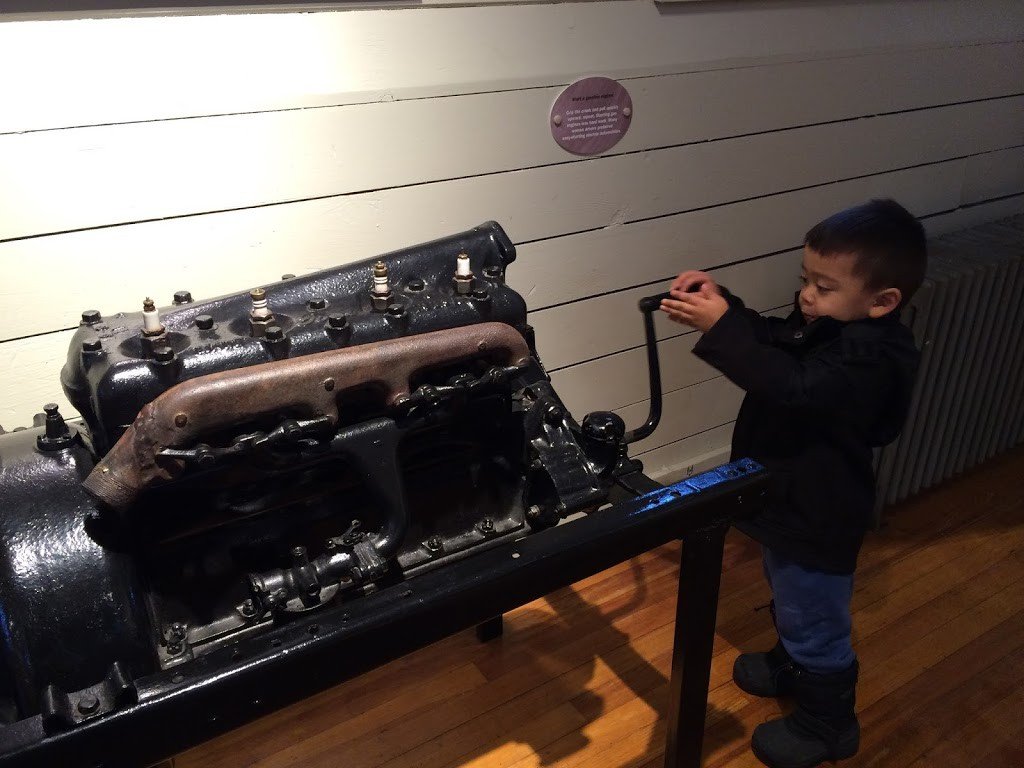
How do you worldschool elementary school kids?
For elementary school aged kids, a big part of what is worldschooling for them is hands-on activities and exposure to new perspectives.
At this age, you can start doing classes and workshops with them. Take a look at how we did a Bali day tour as a family for an example of how elementary age kids can learn through travel.
Also at this age, kids are able to do more physical based activities like snorkeling, kayaking, bicycling. And you can also start discussing the differences they observe among the cultures they visit.
Children at this age are starting to develop their own opinions about the world. Take this time to provide a safe space for them to explore.
Fact #14: hands-on learning experiences are extremely beneficial for elementary aged kids
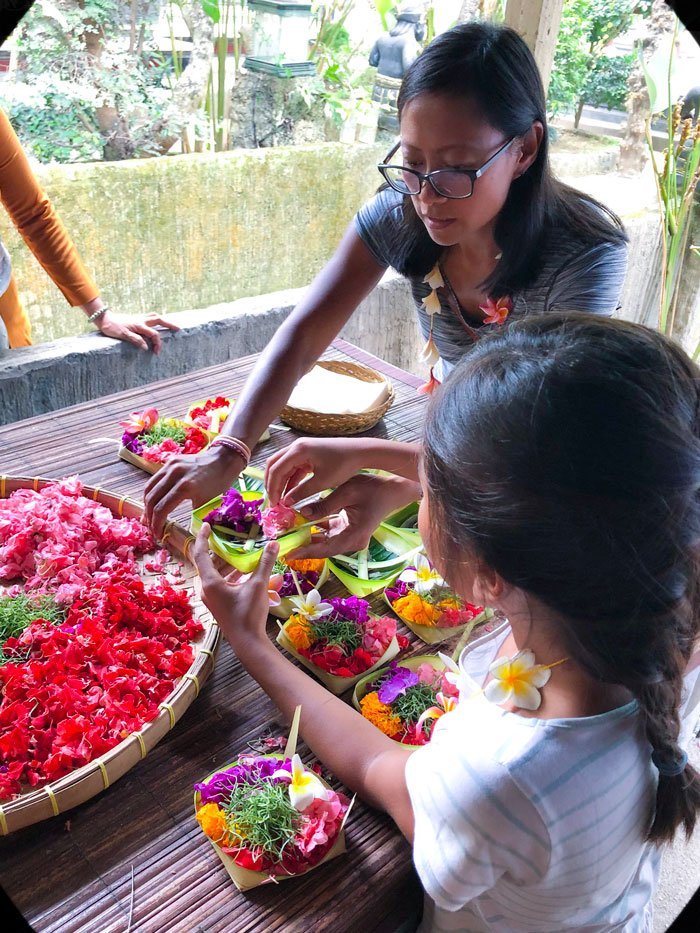
How do teens worldschool?
It’s important to note that what is worldschooling for a teen is much different than what is worldschooling for a young child. Some families dread traveling with teens. But when you worldschool a teen, it can actually be quite a rewarding experience.
At this age, your child begins to solidify their views of the world. But these views are still somewhat malleable. That means there are plenty of opportunities for you and your child to have frank and open conversations about what they observe in the world.
Museums, classes, and workshops are all great activities to do with teens. Tours are also a good way to engage teens when they worldschool. And so are physical activities like hiking, biking, swimming, and snorkeling.
But don’t be afraid to dive deeper into discussing the destinations you are visiting. Talk about the colonial histories of destinations. Talk about current affairs. And definitely talk about the social structures you observe in a destination. This will make the worldschool experience much more meaningful for your teen.
Fact #15: when families worldschool, they create opportunities to discuss social, political, and economic issues with their kids.
Read more tips on how to raise travelers as a worldschooler

Determining what is worldschooling for your family
Once you’re ready to start traveling and learning, you’ll see that the options are many for you and your family. The next step in your worldschooling journey is to determine how and what is worldschooling for your own family.
Adopting a personal philosophy and approach to worldschooling
When defining what is worldschooling to you and your family, it all comes down to choosing an approach that works for your family. Every family does their worldschool experiences differently. There’s no wrong or right way to worldschool.
As I mentioned, some families worldschool as part of their homeschooling curriculum. Other families worldschool as a supplement to traditional school. And still other families only worldschool, without other types of learning.
Feel free to tailor your philosophy and experiences to what suits your family. And don’t be afraid to refine and adjust over the years as well. What works for one year, may not work for subsequent years.
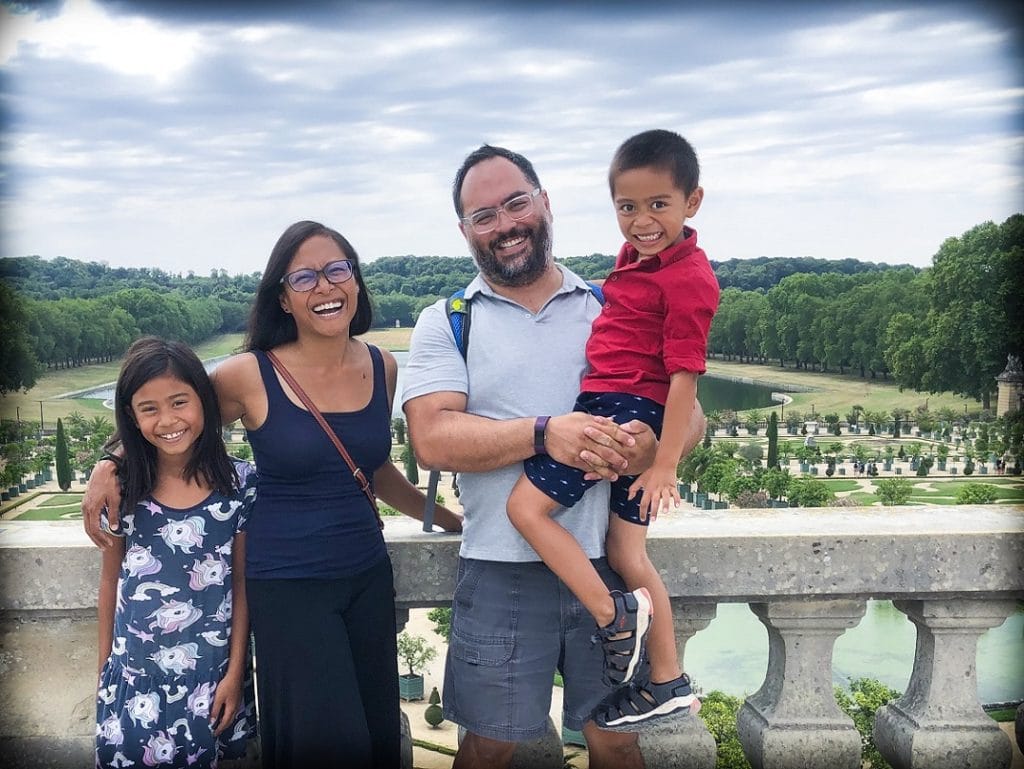
Making worldschooling a part of your family’s travel philosophy
Over time, you won’t need to ask what is worldschooling, you’ll know it intuitively. Taking a worldschool-based approach to travel will just be a natural part of your family’s travel philosophy.
In the meantime, keep seeking out learning opportunities wherever you are in the world. And keep encouraging your children to learn from the world! You’ll be surprised at how much they learn and grow from their experiences.
Do you consider yourself a worldschooler? Share in the comments how you would answer the question of what is worldschooling.
Take steps to truly live the worldschooling lifestyle. Use my ebook, Hey Kids, Let’s Go Travel! as your guide to start planning your family gap year, and live the travel life you want today!
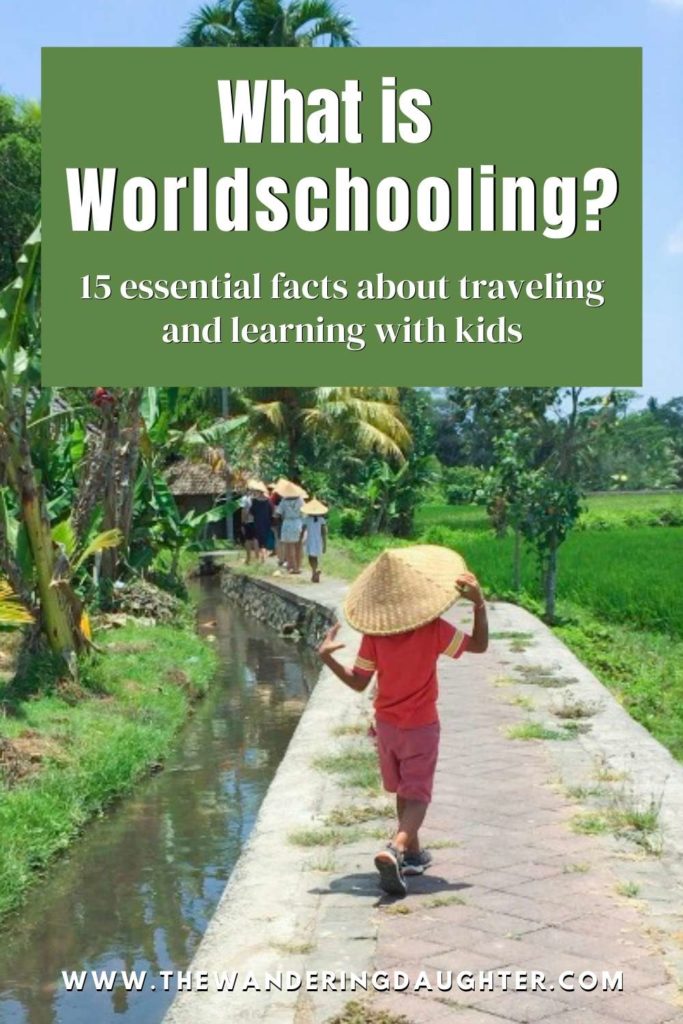
Need help thinking through how to budget for a family trip? My Travel Budget Worksheet is just the tool you need! Click here to receive your free copy by signing up for my newsletter.
Want to connect with me on social media? Find me on Facebook, Instagram, Pinterest, and Twitter. And for those of you who are dedicated to traveling more responsibly, sustainably, and ethically, join over 200 like-minded families on my Facebook group, Responsible Family Travel.
